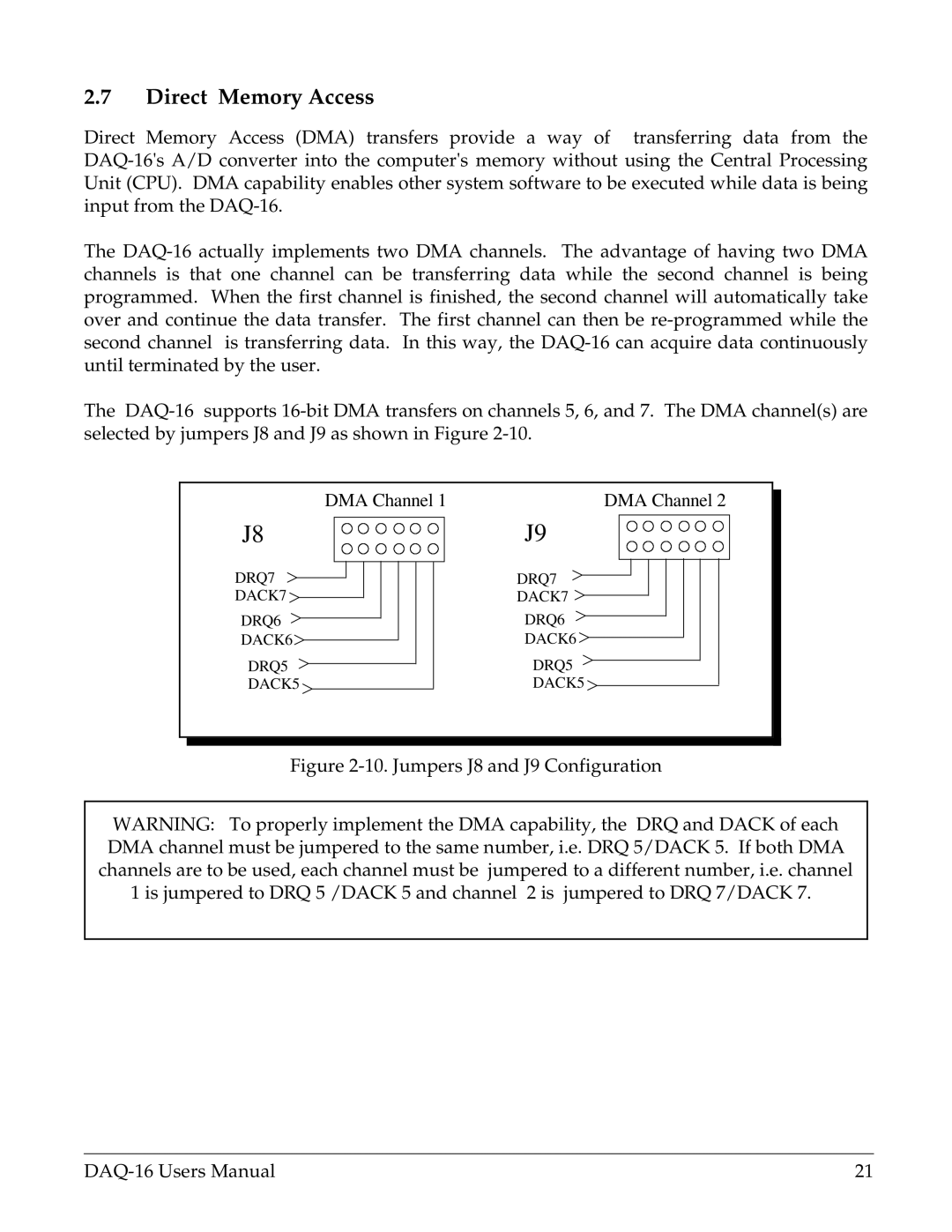2.7Direct Memory Access
Direct Memory Access (DMA) transfers provide a way of transferring data from the DAQ-16's A/D converter into the computer's memory without using the Central Processing Unit (CPU). DMA capability enables other system software to be executed while data is being input from the DAQ-16.
The DAQ-16 actually implements two DMA channels. The advantage of having two DMA channels is that one channel can be transferring data while the second channel is being programmed. When the first channel is finished, the second channel will automatically take over and continue the data transfer. The first channel can then be re-programmed while the second channel is transferring data. In this way, the DAQ-16 can acquire data continuously until terminated by the user.
The DAQ-16 supports 16-bit DMA transfers on channels 5, 6, and 7. The DMA channel(s) are selected by jumpers J8 and J9 as shown in Figure 2-10.
DMA Channel 1 | DMA Channel 2 |
J8
DRQ7  DACK7
DACK7 
DRQ6
DACK6
DRQ5  DACK5
DACK5 
J9
DRQ7  DACK7
DACK7 
DRQ6  DACK6
DACK6 
DRQ5
DACK5 
Figure 2-10. Jumpers J8 and J9 Configuration
WARNING: To properly implement the DMA capability, the DRQ and DACK of each DMA channel must be jumpered to the same number, i.e. DRQ 5/DACK 5. If both DMA channels are to be used, each channel must be jumpered to a different number, i.e. channel 1 is jumpered to DRQ 5 /DACK 5 and channel 2 is jumpered to DRQ 7/DACK 7.

![]() DACK7
DACK7 ![]()
![]()
![]() DACK5
DACK5 ![]()
![]() DACK7
DACK7 ![]()
![]() DACK6
DACK6 ![]()
![]()
